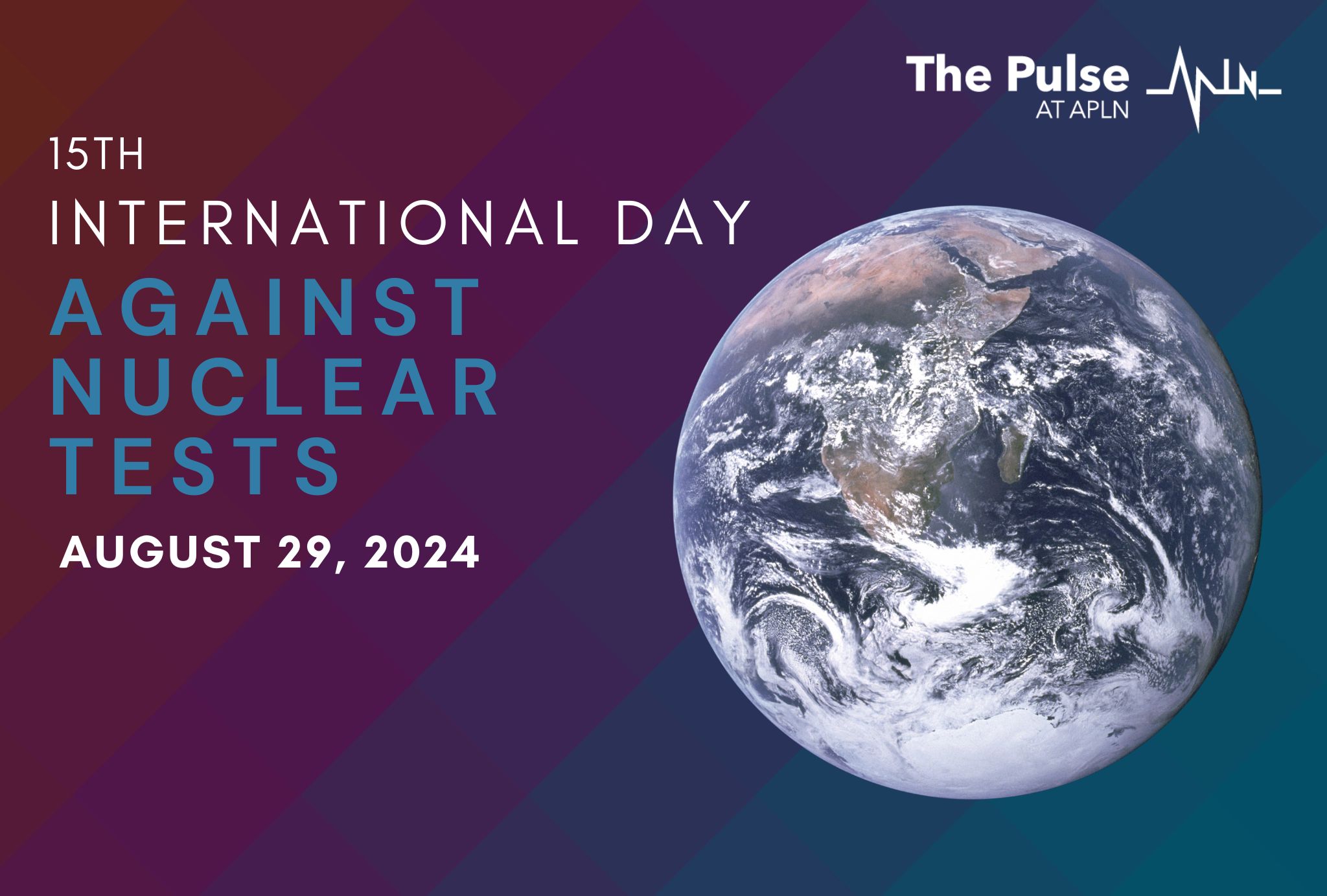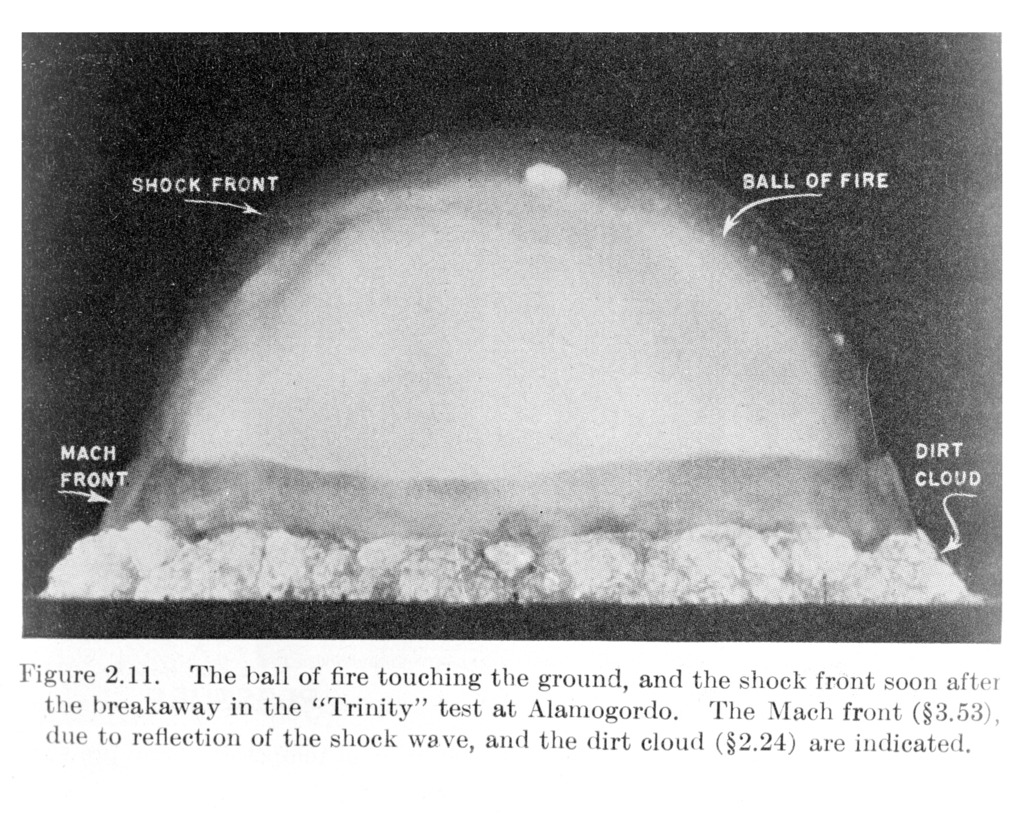15th International Day against Nuclear Tests
The issue of nuclear weapon testing is once again in the spotlight. Russia has formally de-ratified the Comprehensive Nuclear-Test-Ban Treaty (CTBT). New construction or heightened activities have been reported at nuclear test facilities in China, Russia, and the United States. This has raised global apprehension that one or more of these nations could potentially resume nuclear testing. North Korea is believed to have made preparations for a seventh nuclear test, its first since 2017, but has so far refrained from carrying it out. Other nuclear-armed states are watching.
On this backdrop, as we observe the 15th year of the International Day against Nuclear Tests on August 29, we asked experts whether new nuclear weapon tests remain an actual possibility in today’s strategic environment? Do the benefits of explosive nuclear testing now outweigh their costs for countries? And what can be done to remove the spectre of nuclear testing from the present international climate?
Francesca Giovannini
Executive Director of the Project on Managing the Atom at the Harvard Kennedy School’s Belfer Center for Science & International Affairs, and Former CTBTO Policy Adviser to the Executive Secretary
The Costs of Nuclear Testing Outweigh the Benefits
The possibility of Russia, China, or the United States resuming nuclear test explosions is plausible, but the arguments in favour are deeply flawed. First, the idea of using nuclear tests as signalling is gaining traction. For example, the Trump administration reportedly considered testing a device due to suspicions that Russia and China violated the moratorium. Russian analysts have similarly advocated for “nuclear demonstration shots” to deter NATO support for Ukraine. While an underground test might be symbolic, an atmospheric detonation, such as over the Black Sea, could heighten the perceived credibility of Russia’s threats and escalate tensions. However, it is unclear how such a demonstration would alter the battlefield reality. It might even backfire by solidifying international resolve against the aggressor, without changing the underlying strategic dynamics.
Second, as nuclear states modernise their arsenals, some groups push for resuming testing, arguing it provides more reliable data than simulations. However, most modernisation focuses on delivery systems—missiles, bombers, submarines—rather than warheads, which remain largely unchanged. Therefore, resuming warhead testing is unnecessary and unrelated to broader modernisation efforts.
Despite a shifting geopolitical landscape, most nuclear states, except North Korea, conclude that the costs of resuming testing outweigh the benefits. The United States continues to support the testing moratorium and advocates for the CTBT. However, growing concerns about Russian and Chinese compliance, along with domestic political pressures, could challenge this support. Yet, these factors alone are unlikely to compel the United States to resume testing without significant strategic shifts.
If the moratorium ends, it would likely be initiated by countries other than the United States. To reduce the incentive for nuclear testing, strategic dialogue among the P5 members of the UN Security Council remains indispensable.
Dmitry Stefanovich
Research Fellow at the Center for International Security at the Primakov Institute of World Economy and International Relations (IMEMO) of the Russian Academy of Sciences.
Preserving the Nuclear Test Moratorium
The moratorium on nuclear testing remains in place, however there are trends that might eventually undermine it. Among those trends, the most important one might be the return of the ‘great power competition’ and the nuclear competition within it. Nuclear weapon states, both NPT and non-NPT, perceive their nuclear arsenals as the ultimate military security guarantee. At the same time, this very guarantee is persistently threatened by the continuous investments across all military domains to preserve or achieve superiority and strategic advantage.
So far simulation techniques based on the test data accumulated throughout the nuclear era was considered to be good enough – but the ‘enough’ is a variable. Today we see rapid development of emerging and disruptive technologies, and it is quite possible that eventually we might come to a point when only actual nuclear test will be the reliable enough option to assure nuclear capability.
Both political and technological factors might lead to a resumption of nuclear testing. Still, it seems, the decision-makers understand the broader implications of such event, which can be boiled down to a very simple effects: if one starts, others will follow, with all the political blame falling on the first one, and all the technological and possible military advantages achieved by everyone. Non-nuclear weapon states will also react negatively to possible nuclear testing by anyone, widening the existing rift in the international relations symbolised by the TPNW.
The only solution is achieving actual indivisible security and ultimate nuclear and general disarmament, which is a distant possibility in the current international environment. So, the threat of nuclear test resumption will remain, but this does not mean that efforts to preserve the nuclear test moratorium are in vain – now they are even more crucial.
Manpreet Sethi
Senior Research Adviser at APLN and Distinguished Fellow at Centre for Air Power Studies, New Delhi
Nuclear Testing as Political Messaging is a Dangerous Idea
Satellite images suggest that Russia, the United States, and China, have built new structures such as roads, storage facilities, and tunnels at their nuclear test sites in the last 3 to5 years. This heightened activity can be interpreted as nuclear signalling amidst highly stressed inter-state relations. Since these states are known to conduct sub-critical experiments and advanced computer simulations to refine their stockpiles, testing is likely to be for political messaging. But, if any of these states were to break the norm on nuclear testing, it could open pathways for others to follow.
At the end of its nuclear testing in 1998, India had declared a unilateral moratorium on further tests. This was reiterated in 2008 on the conclusion of the Indo-US nuclear agreement. India is likely to stay with this voluntary commitment. It maintains that its practice of deterrence by punishment does not need more tests given the densities of population in megacities in Southern Asia, and because advances in computational power, algorithmic sophistication, and data analysis allow weapon improvement. But, if the norm of non-testing was to be breached by others, it is likely that voices in favour of achieving greater reliability of yield could push India into exploiting the opportunity.
In fact, a nuclear test by any major power could cause a chain reaction dynamic that would touch the shores of other nuclear possessors, and threshold nuclear states. To quell this possibility, it would be best to abstain from violating the norm. The three major nuclear states – United States, Russia and China – should immediately reaffirm their commitment to a testing moratorium. If they could coordinate their unilateral announcements, or make a joint declaration, it could be an effective, and much needed, nuclear risk reduction measure.
Sitara Noor
Associate at the Project on Managing the Atom at the Harvard Kennedy School’s Belfer Center for Science & International Affairs, based in Pakistan.
The Spectre of Nuclear Testing is Upon Us
After years of successfully restraining the states from conducting new nuclear tests (with the exception of North Korea), the CTBT now faces its gravest challenge. Reports of increased construction activities at nuclear test sites in China, Russia, and the United States, along with Russia’s decision to revoke its ratification of the CTBT, highlight the impending risk of a resumption in nuclear testing. It is feared that a single new nuclear test by any of the P5 states could break the established norm and will likely trigger a chain reaction.
In South Asia, both Pakistan and India have neither signed nor ratified the CTBT, however, they maintain a unilateral moratorium on nuclear testing. In 2016, Pakistan proposed converting these unilateral moratoria into a bilateral non-testing agreement, but India did not respond positively. While Pakistan is unlikely to initiate new nuclear tests on its own, it might reconsider if India decides to test again, especially in light of reports suggesting that India’s Pokhran-II thermonuclear test was unsuccessful. In such a scenario, Pakistan might see an opportunity to advance its own nuclear capabilities and test new weapon designs.
The resumption of nuclear tests will further weaken the global nonproliferation regime and push countries towards the spectre of nuclear conflict. It is, therefore, imperative to de-politicise the debate, strengthen the norm against nuclear test with the ultimate goal of entry into force of the CTBT.
John Tilemann
Senior Associate Fellow at APLN and former Deputy Permanent Representative of Australia to the International Atomic Energy Agency (IAEA)
Asia-Pacific: The Global Nuclear Weapon Playground
Asia-Pacific has been the testing playground for all countries that have produced nuclear weapons (apart from Israel and South Africa). Little wonder then that this is also the region which has led efforts to end global nuclear weapon testing. In 1973 Australia and New Zealand took the issue of continued French nuclear testing in the Pacific to the International Court of Justice and succeeded in driving French testing underground. The South Pacific Nuclear Free Zone of 1985 was a regional response primarily directed at ending French atomic testing.
International concern over continued nuclear testing spawned the CTBT. Concluded in 1995 and while still not formally ‘in force’ it is a powerful tool in support of the global norm against nuclear testing and of the global nuclear non-proliferation regime based on the Nuclear Non-Proliferation Treaty (NPT). The last test to be conducted anywhere was by North Korea in 2017. This shows that global restraints are working. But this emerging norm is fragile and under pressure especially in Asia-Pacific. While the NPT and the CTBT are powerful constraints on the spread of nuclear weapons there are very few and totally inadequate guardrails against nuclear use by the existing nuclear powers.
Today our region hosts eight nuclear armed actors in a matrix of confrontational relations. The International Day against Nuclear Tests is a reminder of the urgent need to reinforce existing nuclear restraints – and of the equally urgent need to foster new ways to curb spiralling nuclear threats in Asia-Pacific and beyond.
Mitsuru Kitano
Executive Adviser, Council of Local Authorities for International Relations (CLAIR) of Japan, and former Ambassador of Permanent Mission of Japan to the International Organizations in Vienna
Nuclear Testing Has No Place in Japan
Unfortunately, the world is moving rapidly away from the era of nuclear disarmament and de-escalation. Some non-nuclear weapon states are tempted to pursue nuclear armament. Some nuclear-weapon states intend to diversifytheir nuclear arsenal. For them, nuclear testing remains an effective means for achieving their goals.
Japan is legally committed not to possess or manufacture nuclear weapons. Thus, nuclear testing has no place in Japan. Rather, Japan wishes to see the world free of nuclear weapons, and renders its staunch support for the CTBT.It is true that disarmament does not work in a vacuum. Efforts for nuclear disarmament and arms control should be considered within the context of the real-world security environment. Given the current deterioration of security environment, it is inevitably an uphill battle.
However, there are several actions that we can and should take. Consolidating a norm of nuclear test ban is one such goal, along with reaffirming the 1985 Reagan-Gorbachev statement that “A nuclear war cannot be won and must never be fought” and banning the production of fissile material for use in nuclear weapons.
Sang Hyun Lee
Senior Research Fellow, Sejong Institute, South Korea.
Another Nuclear Test on the Korean Peninsula?
North Korea has conducted six nuclear tests so far and is now estimated to have almost completed basic nuclear weapons technology. However, many experts believe that a seventh nuclear test may be needed to eventually confirm and miniaturise a North Korean nuclear warhead. Therefore, at least on the Korean Peninsula, there is a very high possibility of a nuclear test.
Today, we know that nuclear weapons can be developed even without a physical nuclear test given the advancements in nuclear weapons design technology and the computer simulation of tests. However, a nuclear test remains the most reliable method to verify the final performance of a nuclear weapon. Therefore it is expected that North Korea will conduct a physical nuclear test on the Korean Peninsula. North Korea is already subject to various international sanctions, including those imposed by the United States and the UN Security Council, and additional sanctions in the event of another nuclear test will not have a significant actual impact. It is assumed that North Korea is weighing the timing of a nuclear test while monitoring its domestic timetable and external conditions.
If nuclear tests are to be eliminated in the current international order, the norm of nuclear non-proliferation must be firmly reestablished. The key to achieving this goal lies in existing nuclear weapons states agreeing and keeping their promises under the NPT. Unless nuclear powers fulfill their obligations to reduce their nuclear arsenal, it will become increasingly difficult to stop other countries with nuclear aspirations.
Man-Sung Yim
Professor of Nuclear Engineering, Texas A&M University and Director of the Nuclear Nonproliferation Education and Research Center (NEREC) at the Korea Advanced Institute of Science and Technology (KAIST).
Strengthening the Taboo against Nuclear Tests
Nuclear weapons testing remains an actual possibility as North Korea continues to advance its nuclear capability and the Nuclear Weapons States are making heavy investment into enhancing nuclear weapons, driving a growing new arms race.
The benefits of explosive nuclear testing versus the cost depend on the strategic security situation of a country. Whereas the Nuclear Weapons States may find that there are more benefits to nuclear testing as compared to the cost of not testing, that may not be the case for North Korea. Another North Korean nuclear weapons test may push the United States and South Korea toward more aggressive strategic collaboration.
To remove the spectre of nuclear testing from the present international climate, we need to keep emphasising the taboo associated with nuclear weapons, the environmental injustice of nuclear testing, and low utility of nuclear weapons in modern warfare, while strengthening international collaboration to prevent horizontal and vertical nuclear proliferation.




![[Infographic] Nuclear Tests in the Pacific](https://cms.apln.network/wp-content/uploads/2023/11/Infographic-2.2.jpg)
